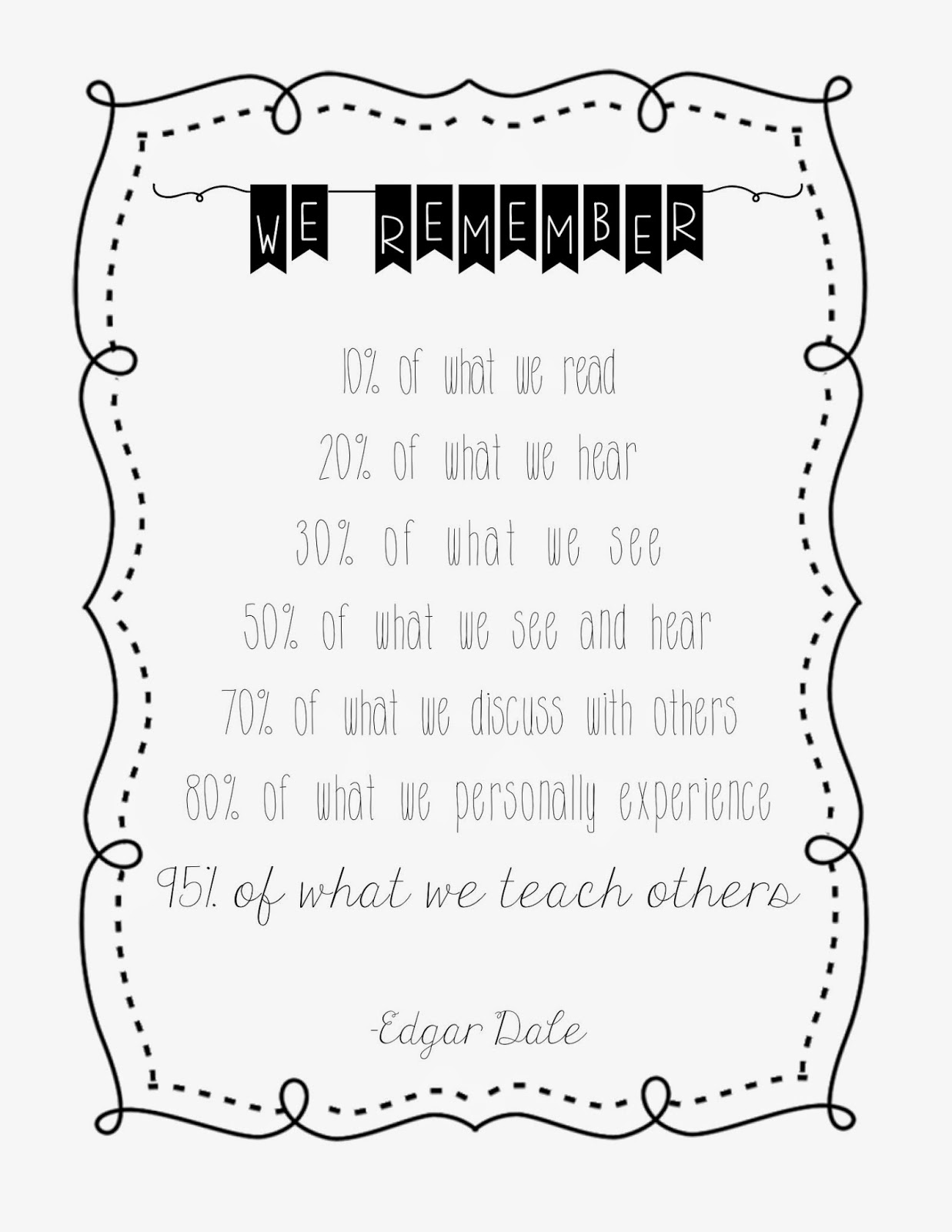On Friday at my presentation I shared this...
 |
| Border from Scrappin Doodles. Fonts by KG Fonts and myself. |
It is far from pretty and girly, if you will, but extremely purposeful.
I am in no way a brain expert.
(Although, I do like to tell my firsties I know A LOT about the brain! Makes me sound more important than just telling them "I kinda, sorta know a little bit about the brain so you should maybe listen to my advice." Doesn't sound very important... Insert the sound of Charlie Brown's mumbling teacher here.)
Truth is, I have only some basic knowledge from workshops I been trained at, books I've read, and my own Googling obsession. #teachernerd
That being said I do know that the more we see something,
the more we hear something,
and the more we do something,
the more we know or remember something.
I use that with my firsties (and way back when with my third graders, too)! They can understand that. It's a great way for them to let go of the cool factor and sometimes just be willing to do the silly with us, in order to help them remember what we are learning.
Here's how that looks in my classroom.
Picture it. We are getting ready to sing a song or do a chant or pretend we are growing like flowers using our bodies (helping us in the end to learn the parts of the flowers). Little Joe Shmoe is sitting in the corner and doesn't want to be bothered because let's face it, he's wayyyy cooler than me. (Ain't that the truth!)
So in my classroom, I will continue to show everyone and PRAISE those kiddos who are doing it and giving it their Oscar performance. You know the ones! ;)
When I pause for a moment, I will say these words while pointing and gesturing the motions. (My kiddos have heard these lines 459 times and so at this point they will chime in and help me.)
I say:
The more I see it, (pointing to my eyes)
The more I hear it, (pointing to my ears)
The more I do it, (moving my arms as if running in place)
The more I know it! (pointing to my brain)
From there I simply give a less than 30 second reminder about the brain and what I know. I share how proud I am of all those friends willing to take a risk and look a little silly because I know they would rather know it, than care about looking silly. If they are taking that risk with us by seeing, saying/hearing, and doing, then all that info is sticking. When it comes time for a test or assessment, those students will be the ones who will have this little silly trick to help them remember the content.
With that, we continue on repeating and practicing the song/chant/gesture. All with a happy smile on our face and welcoming Little Joe when he is ready...because one day he will be ready. After all, Joe is now interested in these facts about the brain and I have now not only piqued his interest but he is learning the material I wanted him to learn in the first place. Win. Win.
I keep those simple words in my head (and up my sleeve) to help me when I want to remind students how important it is to put the words we are learning into action. It's a great tool and device to share with your students.
I love the poem above because it not only reminds me of those words but also that the greatest teachers in the room are not necessarily the one standing there getting paid to teach. It is my students teaching each other. I do a lot of "turn and share with your neighbor" throughout the day. Sometimes as a management tool. Sometimes I use it as a state change. More often than not though, I use it as a quick assessment to listen to my friends around the room to see if they understand the material being taught. Can they understand? Can they explain it to their friend? Can they give examples? Can they "teach" it to each other? If not, that's my quick cue to go back and do some reteaching if not in the moment, then definitely the next day.
The greatest thing about all of this see, hear, do, teach others stuff????
Less cramming for tests and need for lengthy study guides. Students are more engaged and participating. They stay involved in the learning and are part of that teaching process. When they become part of the process and are engaged and moving, they are able to show what they know on tests, assessments, on work tasks, and apply those skills into future learning. Love when that happens!
Let's go, Monday! We're ready! ;)

No comments:
Post a Comment